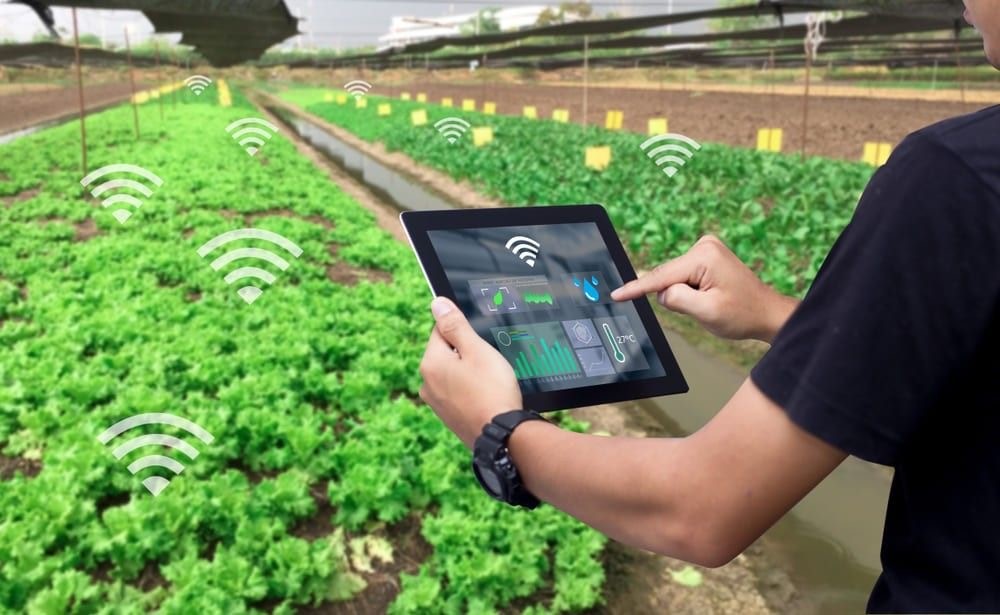The journey of farming spans great distances from the time the plough first kissed the earth, through subsequent marvels like the tireless tractor and the harmonious union of combine machines, all conspiring to elevate the yield of the land. Every realm dances to the tune of the digital era’s symphony, and the agricultural sphere acts no differently. The agricultural sector has undergone a significant transformation through the integration of digital technologies and agri-tech innovations
This convergence of streams paved the way for what we now call digital agriculture or smart farming. Digital agriculture encompasses the incorporation of digital technology into the management of livestock and agricultural affairs, as well as other aspects associated with nurturing and managing our food stocks. The word typically incorporates the numerous applications of the vast amounts of data accumulated within this subject. However, it extends further to the harmonic integration and operation of technology along the supply chain, from seed genesis through farm denizen upbringing to the eventual consumer’s hands.

The rise of emerging digital technology has the potential to fundamentally alter time-honoured agricultural practices. The United Nations Food and Agriculture Organisation dubs this transformation a revolution, a “digital agricultural revolution,” which will strengthen agriculture’s ability to meet the demands of the world’s population in the future. Some publications refer to this shift as “Agriculture 4.0,” emphasising its importance as the fourth crucial agricultural revolution.
The pressing need to increase food production to keep up with the expanding global population is at the core of adopting digital agriculture. Farmers are turning to technology to streamline their operations as a result of the limited agricultural land and complicated problems related to climate change. A good example is precision agriculture, which uses a variety of instruments, including GPS, sensors, and drones, to gather information on the soil, crop health, and moisture levels in real time. With the use of this data-driven methodology, farmers may individually customize their interventions, such as irrigation plans or nutrient applications, to meet the specific needs of each field section. The result is a reduction in resource waste and an amplifying of yields that speak for themselves.
Additionally, the field of agri-tech advancements encompasses animal management as well as crop nurturing, going beyond just crop care. With the help of IoT (Internet of Things) devices, farmers can now monitor the behaviour and welfare of their animals from a distance. For example, wearable sensors can effectively track important signs and patterns of activity, enabling the early diagnosis of illnesses and providing appropriate veterinarian care. This technological prowess not only raises the bar for animal welfare but also serves as the foundation for the pursuit of simplified breeding and production techniques that bear the efficiency seal.
The complex web of the supply chain is woven through the entire field of digital agriculture, extending its influence well beyond the bounds of the farm. For instance, blockchain technology is being used to improve the traceability and transparency of the food manufacturing process. Blockchain creates a connection that gives consumers unfiltered insight into the provenance and travel of their food by painstakingly documenting every step of the production and distribution journey, from the nurturing grounds to the table. The areas of food safety, quality control, and the foundation of consumer confidence all benefit from this elevation.

Data analytics and machine learning are resonating in perfect harmony within the digital agriculture revolution. A wealth of potential insights beckons given the deluge of data that agricultural processes are spewing out. By predicting weather patterns and imminent insect disruptions, predictive frameworks help farmers prepare preventive measures. In the meantime, AI-infused algorithms choreograph the delicate dance of historical data, dropping hints about the best seasons for sowing, the best types of crops, and the deft harvesting methods. This ballet not only improves productivity but also erects a defence against the threat of crop failure.
Government actions and private sector investments are propelling the rapid progress of digital agriculture. Both emerging startups and well-established companies are innovating to address diverse challenges faced by farmers. They’re introducing solutions that range from automated robotic harvesters to vertical farming systems, diversifying the methods of food production. However, it’s crucial to acknowledge the digital divide that could exclude smaller, resource-constrained farmers from accessing the benefits of these technologies.
The face of agriculture is in the midst of a revolutionary makeover, courtesy of digital agriculture and agri-tech innovations. Agriculture’s face is undergoing a dramatic transformation as a result of digital agriculture and agri-tech advances. These breakthroughs provide solutions to age-old problems. Consider precision farming, Internet of Things-enabled livestock management, blockchain traceability, and data-driven decisions. These examples demonstrate how technology improves efficiency, sustainability, and productivity in agriculture. As we navigate the domain of digital agriculture’s promise, it is critical to guarantee that these advances are accessible to all farmers, regardless of size or location. By doing so, we are constructing a more robust and technologically advanced future for agriculture.
Sources
- https://en.m.wikipedia.org/wiki/Digital_agriculture
- https://www.advancedmobilegroup.com/blog/what-is-digital-agriculture-and-what-are-the-benefits
- https://guardian.ng/opinion/digital-agric-as-panacea-to-food-production-security/
http://breakthrough.unglobalcompact.org/disruptive-technologies/digital-agriculture/




